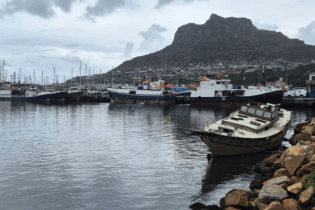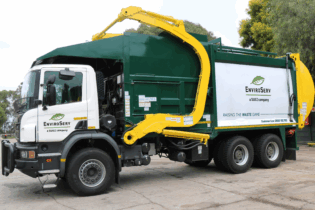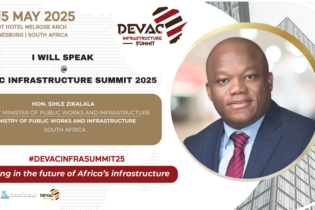The capture and destruction or utilisation of landfill gas is not a legislative requirement in South Africa, which opens the doors for the commercial sector to develop this resource in the warming climate of carbon credits and green electricity tariffs. So what is needed to extract the euros and rands from society’s detritus? Landfill site? Check! Trillions of methane-producing microbes? Check! Proven technology to extract the gas and produce green electrons? Check! A local industry with the experience and expertise to design, build and operate the facility? Check! Check! Check!
Dr M Griffith, K Naidoo and M Saner
Sadly, it’s not so simple, and the problems lie in the nature of the landfill sites themselves, the populations they serve, the people who operate them and the officials who regulate the entire chain. Landfill sites are good projects, with great economic and ecological benefits; however, a landfill site does not automatically equate to positive financial returns and the correct sites must be chosen.
CEF (Pty) Ltd is a private company owned by the Department of Energy with a mandate to search for appropriate energy solutions to meet the future energy needs of South Africa. Through the feasibility study of a basket of 20 wholly-owned landfill sites, some valuable lessons have been learnt on the assessment of site feasibilities, and being able to tell the difference between good sites and bad sites may save time and money.
Landfill gas projects
A landfill gas (LFG) project is essentially a means to capture and utilise the methane-rich gas (biogas) that is generated by the naturally occurring microbial processes in the landfilled . The production of gas creates an increase in the pressure in the site, and the collector wells are installed in the waste and subjected to a low suction pressure to capture the gas. These collector wells all feed a gas main that carries the gas to a central equipment compound, which houses the blower, gas flare or burner, generation plant, and monitoring and control equipment (McBean, 1995). Commercial projects will earn revenues from the sale of carbon offset credits and renewable electricity.
The extraction and destruction of the biogas not only eliminates the impact of methane on the greenhouse, but also destroys odour-causing volatile compounds and reduces the hazards associated with the flammable nature of the gas. The gas is not stored in the site but is continuously released in spite of any gas collection infrastructure. Although there are more efficient ways to extract energy from waste and the country’s objective is to reduce the amount of landfilled waste, the sites are there and the gas is being released, so it should be captured and utilised. As the development of LFG projects is a commercial undertaking, a detailed feasibility study must be conducted to establish the viability of the project.
The feasibility study approach
A five-pronged approach is taken in the development of the bankable LFG feasibility studies: technical, environmental, legal, clean development mechanism (CDM) and financial (See Figure 1).
|
||
|
||
|
||
|
||
|
Fig. 1: The five aspects of an LFG project feasibility study
The following activities form part of each group:
1. Technical – split into two stages, namely prefeasibility and detailed feasibility studies.
2. Waste licence and environment study – the Act regulating landfill gas utilisation changed from the National Environmental Management Act of 1998 to the National Environmental Management: Waste Act of 2008. Consequently the environmental methodology changed from a full EIA to a waste licence application and basic assessment .
3. CDM – the CDM was chosen as the system through which the carbon will be traded due to the higher prices that the Certified Emission Reductions (CERs) commanded. The CDM process includes a methodology assessment, Project Idea Note , Project Design Document , validation, CDM registration. Verification of the CERs forms part of the site operations.
4. Legal – the exclusive rights to utilise the gas is granted through an agreement with the municipality, in exchange for a fair royalty payment. An important issue is the land use agreement, with triggers in the Municipal Finance Management Act causing some lively debate around the negotiations table. The two primary revenue streams – the CERs and electricity – will be secured using long-term Emissions Reduction Purchase Agreements and Power Purchase Agreements (PPAs).
5. Financial – Being a commercial endeavour, the project must generate sufficient returns to justify the risk of investment. The technical study, gas flows with CER as well as electricity generation estimates and sale prices are combined with the CAPEX and OPEX estimates to form a financial model. The model is used to evaluate the performance and determine the viability of the project, which is taken to the shareholder’s board for the final investment decision.
A positive result for all five aspects is vital to reach bankability; however, the financial performance has proved to be the greatest hurdle. As the majority of these activities are informed by the results of other activities in other groups, the processes must parallel each other in a carefully structured fashion. The experience gained in conducting the 20 feasibility studies is shared below.
Experience shared
(1) Landfill sites are not attractive (investments): Although those in the know will argue to the reasons behind it all, the fact remains that landfill gas CDM projects are renowned for under-delivery. Worldwide the figures are quite appalling, with 35% of the projected CERs delivered from 48 projects (http://cdmpipeline.org/cers.htm). According to Pierce (2009) the over-projection of landfill gas extracted was the cause for many project failures. The challenge to the project developer is to convince investors or finance institutes that their project will deliver as expected. From these experiences, a more conservative approach is now being adopted. On the flip side, the financial institutions must ensure that the right professionals are appointed for the due diligence in order to recognise the level of conservatism that has been adopted and thus avoid excessive haircuts on a project that has already been to the army’s barber.
(2) Not all sites created equal: An obvious statement for anyone involved in the industry. However, a surprising number of people believe that a landfill site equals a landfill gas project. Be they ambitious businessmen or municipal councillors, these expectations must be properly managed and the developer often needs to negotiate its way around the small and shallow to find those sites that are ‘more equal than others’. The sites that have progressed to final bankability all have the following in common: in-place volume of more than one million cubic metres, an annual disposal rate of more than 200 000 t and the receiving of waste for a few years into the project.
(3) The fuel: To quote a waste-to-energy professional (McKendry, 2008), it’s all about the fuel. For a landfill gas project, the organic waste is the fuel for the production of biogas. Those industrious microorganisms supply the methane in a fairly reliable concentration of about 40 to 60%; however, it’s the quantity that concerns us the most and methane formation needs degradable organic material. Although one can be reasonably assured that the large general waste sites will receive organics, be sure of the proportions of the various waste streams as a high percentage of inert materials may mean the difference between a fizzer and foreclosure.
(4) Open sites are better: As per the previous point, the gas supply is dependent on the incoming waste. Stop the waste and the gas supply will also cease. Due to the nature of the organic processes, the decline is a somewhat drawn-out process with a half-life (50% of the initial gas flow) of about five years post closure. This has a profound effect on the commissioning and operation of the generation equipment as the gas engines performance deteriorates when operated below 50 to65% of the rated capacity. Hence, if the site is closed, some sort of engine swapping will be required. Conversely, open sites will release gas at a more steady rate, which can be exploited through ongoing gas field development. Furthermore, a gas engine operating at a de-rated capacity will provide less return for the CAPEX outlay and is a problem for both open and closed sites, which can only be resolved through a cost-benefit analysis. The difference and challenge of syncing gas flows with engine capacity at a closed and open site is illustrated in Figure 2 and Figure 3.
(5) Good data is like hidden treasure: Reliable data can be difficult to find, but it’s worth finding. Municipal departments often don’t have readily available access to the information, but their consultants do. Add the large number of consultants that have been appointed by the municipalities (generally due to PMFA procurement processes) and one often needs to contact many different professionals in order to retrieve the information. Despite the advancements in remote data access that the cyber age has brought us, the most reliable method of collecting the info is still physically visiting the offices. All information should also be thoroughly interrogated – weighbridge data is a prime example as when questions were asked about the apparent low tonnages at one site, the response was: “Ja, the site opens at 07:00 but the weighbridge operators only arrive at 08:30.”
(6) Local knowledge is vital: South African waste professionals are excellent; they know the sites, know the process and they now have the knowledge to design and implement landfill gas-to-electricity projects. Although the technology is still based on international practices, a South African engineer can tell you which manhole cover is more likely to be stolen and understands concepts like “landfill compactor operator risk”. With list of commissioned landfill gas projects, currently around nine, the South African industry is indeed gathering steam.
(7) Landfill sites are fickle: Although cause is mostly due to the disposal patterns of the populations they serve and the regulators that govern them, an attractive site may suddenly lose all appeal because the disposal rate halves or the site is closed early. This is certainly a challenge as one progresses through a drawn-out feasibility study with continual adjustments to the design required. Significant changes in disposal trends are sometimes unavoidable, but can be picked up by well-directed consultation with the site owner and its landfill operations plan. As one can only work with the information available at the time, the development of the site should remain conceptual for as late as possible.
(8) Projects require patience: A LFG project developer needs a deep pool of patience and an even deeper pool of resources if they wish to see any sort of project dividend. The feasibility stage, waste licence and CDM registration processes are long, drawn-out affairs. When commissioned, the municipal projects should have taken more than three years to implement. It must be said that the pioneering efforts of the early LFG project developers have helped significantly, and these timeframes are getting shorter with each instance. There are some delays, however, which are unavoidable and may catch some cash-strapped developer unawares. Take CER revenues as an example: the project is commissioned and the carbon credits start to flow – not true. The project is commissioned and the CER monitoring process begins. After six to twelve months (depending on how urgently you need cash flows) the verifiers arrive on site, gather the data and write their reports. More waiting is needed while the credits are registered and finally delivered. An 18-month delay between the commissioning date and the first CER cash-inflow should be expected.
(9) Take calculated risks: Linked to point 8, the development of these projects takes time and the commissioning of feasibility activities ‘at risk’ is necessary to keep the programme reasonably short. It is necessary to identify what activities are required and when they should be delivered. An EIA, for example, needs technical information from feasibility work, while the CDM process requires feedback from the EIA, technical study and agreement with the municipality; the gas rights usage agreement requires the completion of the feasibility study. This web of information transfer requires careful planning and coordination for information to be available when needed and to avoid processes being repeated as a result of incorrect assumptions being applied. Additionally, if the project is taken to the market too early, delays or changes in figures may result in reputational damage.
(10) The markets change: In 2008 the projects had a heavy carbon slant – CER prices were in the teens and electricity prices still Eskom based (see Figure 4). Electricity accounted for less than 40% of the project revenues for the 10 years of CDM registration. Now, the CER market is down, but REFIT-based electricity prices are up, with electricity sales accounting for over 65% of the revenue split. Incidentally, a theoretical price of €15/CER (R154/CER) would result in a 50/50 total revenue split with REFIT-based electricity revenues. Adding to the problem is the exchange rate with the South African rand ‘pronking’[1] all over the euro. It’s great for buying European services or equipment, but most of the compliance buyers are also European and the CERs are likely to be Euro-based. The importance of the CER revenues is still significant. The CER revenues are required to make the projects viable and the markets may recover to the extent that the carbon surpasses the electricity revenue, but while on holiday in Greece you may want to take another look at that PPA.
(11)The rules change: The final lesson is that renewable energy is still a relatively new player in a parastatal monopolised market. Thanks to the state’s renewable energy strategy (the White paper on Renewable Energy) and, arguably, the more apparent Eskom supply problems, the regulations are adjusting to make development in the energy industry more accessible to the private sector. Public feedback is central to these changes and it is advisable to at best participate, or at worst be informed, of the intended legislation. The end result should be beneficial to the project; however, the developer must be on the ball in order to change the game plan if and when required. We look forward to a mature renewable energy sector with an established process and many REFIT projects delivering green power to the citizens of South Africa.
Recommended development strategy
The following development strategy is proposed for future developments of a similar nature (Figure 4). The table shows and approximate roll-out order for the processes. This strategy is based on the shareholders only taking risk on the feasibility costs and assumes that a reliable agreement with the site owner and the feasibility team is already in place.
|
Technical
Start pre-feasibility study
Prelim gas models and costs
Complete prefeasibility study
Begin detailed feasibility
Refine gas models and costs
Finalise technical feasibility report
Tender for services Detailed design
Construction
Commissioning!
|
Environmental
Start basic assessment
Impacts assessment
Begin public participation
Screening models
Public meetings
Draft BA report
Submit waste licence application
Specialist studies (if needed)
Complete basic assessment
Finalise public participation
Submit BA report for waste licence application
Obtain waste licence |
CDM
Methodology Assessment
Write and submit project idea note
DNA letter of no objection
Write generic draft project design document (PDD)
Investigate CER pricing
Complete detailed draft PDD
Validation
Contact CER buyers
DNA letter of approval
Final validation report
CDM registration submission
CDM registration |
Legal
Finalise MOU
Investigate generation licence and PPA
Draft gas rights agreement
Finalise municipal royalty structure and site development plan
Finalise gas rights agreement
Finalise PPA
Submit generation licence application
Obtain generation licence
|
Financial
Basic financial model
Evaluate costs and revenues
Detailed financial model
Engage financiers
Final financial model
Final business plan
Draft term sheets
Shareholder decision to invest (CPs)
Select financier
Finalise term sheet (CPs)
Disbursement of debt
|
Figure 4: Recommended project development strategy
Note that a more aggressive approach would be to construct and commission while still awaiting the CDM and generation licence registration, although the financier may not wish to inject funds before such approvals are in place.
Conclusion
The monetising of landfill gas as a commercial project is a viable and established undertaking; however, a comprehensive feasibility study is vital to ensure the projects that make the cut are actually able to perform. The licensing and approval processes makes the commitment of feasibility funds ‘at risk’ almost unavoidable if one is to keep the programme relatively short and the shareholders may face a long wait for the first dividends. Changes in site operation, legislation and markets make these projects challenging developments and a certain degree of ‘looseness’ is required to adapt and move on. The feasibility processes should be progressed, as recommended, in a structured and responsible manner in order to avoid redoing work and to preserve your reputation in the market.
Finally, landfill gas-to-energy projects are attractive projects, not only because of good investment returns: the environmental impacts of greenhouse gas and odour are reduced, jobs are created and renewable energy is delivered to a country that desperately needs it.







